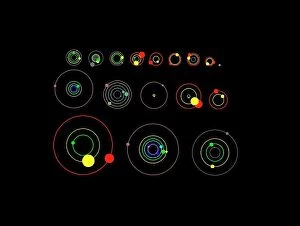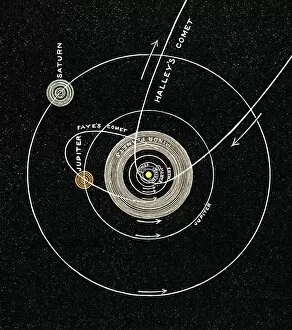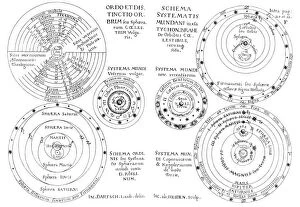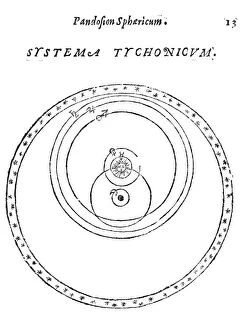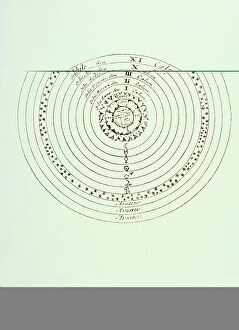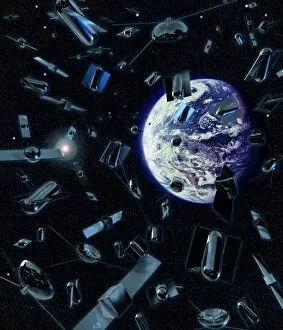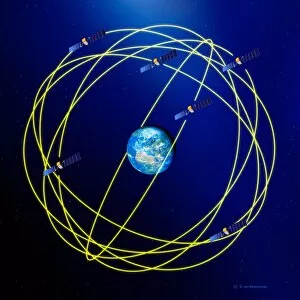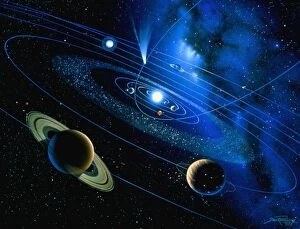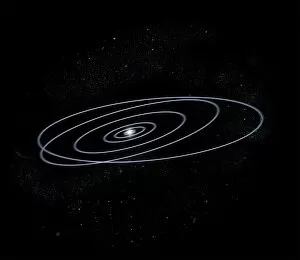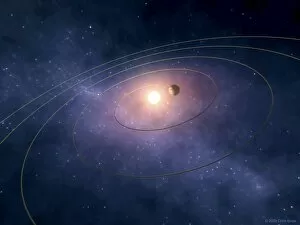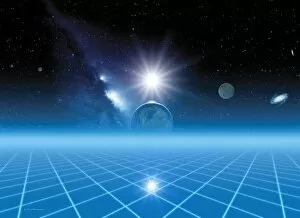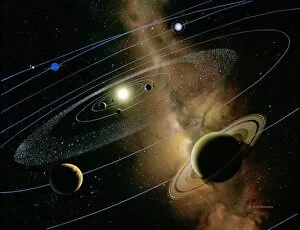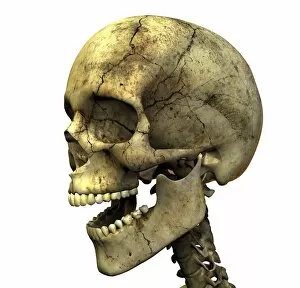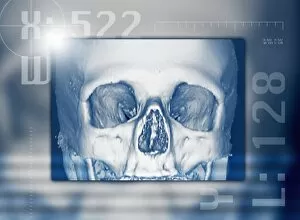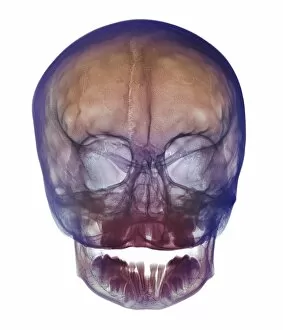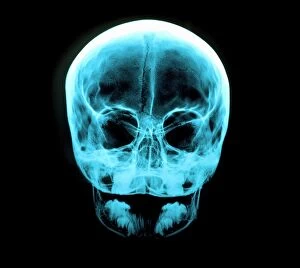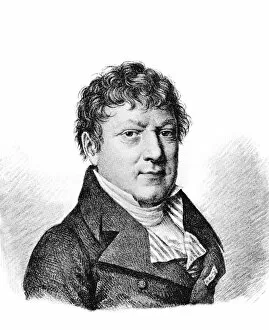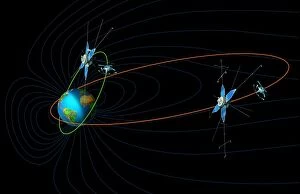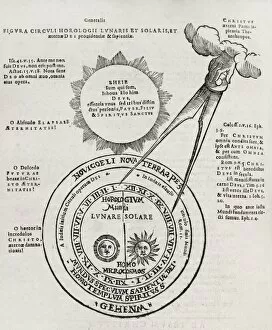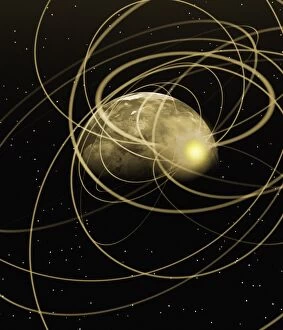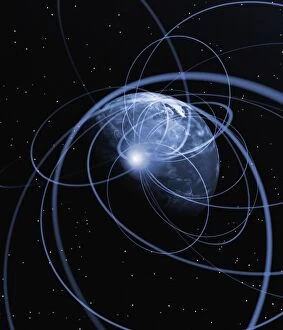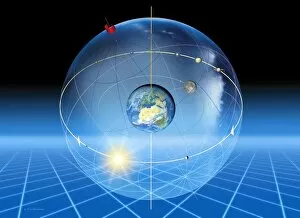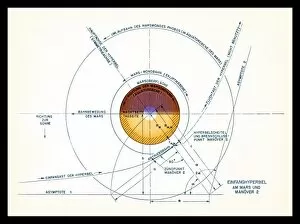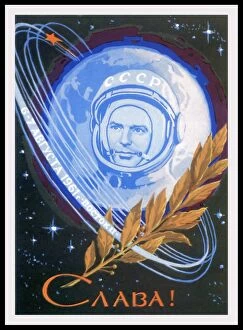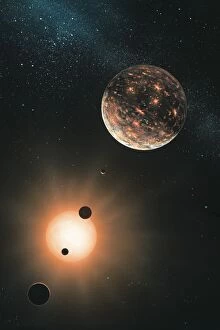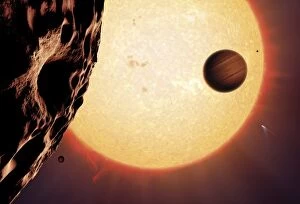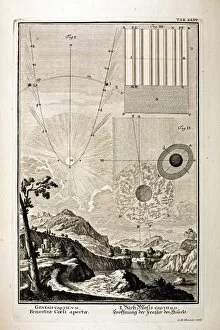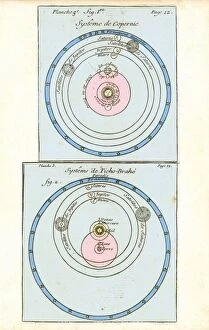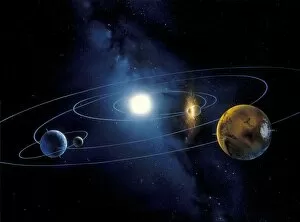Orbits Collection (page 3)
"Exploring the Mysteries of Orbits: From Artistic Depictions to Scientific Breakthroughs" The Orrery by Joseph Wright: A mesmerizing portrayal of celestial mechanics
For sale as Licensed Images
Choose your image, Select your licence and Download the media
"Exploring the Mysteries of Orbits: From Artistic Depictions to Scientific Breakthroughs" The Orrery by Joseph Wright: A mesmerizing portrayal of celestial mechanics, showcasing the intricate dance of planets in their orbits. Leonardo da Vinci's Skull Anatomy: Unveiling the hidden connections between human anatomy and orbital structures, revealing a harmony that spans across different realms. Solar System Artwork: An artistic rendition capturing the awe-inspiring beauty and vastness of our cosmic neighborhood, where orbits shape the destiny of celestial bodies. Epicycles of Mercury and Venus (1823): Delving into historical astronomical theories, unraveling how ancient scholars attempted to explain planetary motions through complex epicyclical paths. Solar System Planets: Witnessing the elegance with which each planet gracefully traces its own unique orbit around our life-giving star, painting a magnificent tapestry in space. Nuclear Fission Artwork: Exploring atomic forces that govern both microscopic particles and colossal celestial bodies alike – an astonishing parallelism bridging worlds unimaginably small and infinitely large. Orbit of Sputnik 1 (1957): Tracing humanity's first steps beyond Earth's boundaries, as this Soviet satellite embarked on its groundbreaking journey around our planet – forever changing our perspective on what is possible. Solar System Map from 1853: A glimpse into early attempts at mapping our solar system's intricacies, showcasing mankind's relentless pursuit to comprehend the vastness that lies above us. Atomic Structure Artwork: Peering into subatomic realms where electrons whiz around nuclei in precise orbits – a testament to nature's underlying order even at its most fundamental level. Gagarin and Tereshkova Souvenir Postcard: Celebrating two pioneers who defied gravity's constraints.

